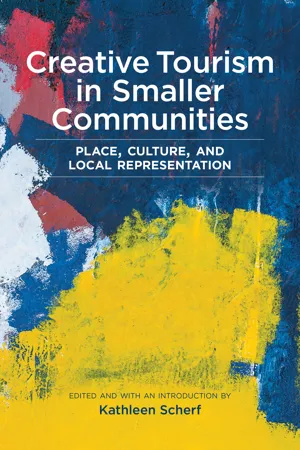
Creative Tourism in Smaller Communities
Place, Culture, and Local Representation
- 328 pages
- English
- ePUB (mobile friendly)
- Available on iOS & Android
About This Book
Tourists are travelling the world in greater numbers than ever before, seeking immersive cultural experiences. This massive rise of tourism has raised issues of social and cultural sustainability in the world's global cities. At the same time, smaller cities and rural communities struggling with increasing urbanization and the loss of traditional industries could benefit from increased tourism.
Smaller cities and communities are uniquely well-suited to hosting tourists seeking authentic connection with local cultures. Locally led, collaborative efforts to build creative tourism industries have the possibility to reinvigorate struggling communities. Creative tourism offers the opportunity to build socially and culturally sustainable channels for growth that benefit locals and visitors alike.
Creative Tourism in Smaller Communities examines the processes, policies, and methodologies of creative tourism, paying special attention to the ways creative and place-based tourism can aid sustainable cultural development. With topics ranging from placemaking through food to the cultural impacts of cruise travel, and from catalyzing creative tourism to creating resiliency, this collection offers a wide range of theoretical and practical perspectives from a variety of experts. Creative Tourism in Smaller Communities offers a bold vision for the future of tourism worldwide.
Frequently asked questions
Information
conclusion
Creative Placemaking Strategies in Smaller Communities
Placemaking for Smaller, Happier Places
Table of contents
- viiContents
- ixAcknowledgements
- 1introduction
- 271
- 612
- 793
- 1094
- 1375
- 1656
- 1917
- 2098
- 2299
- 25910
- 283conclusion